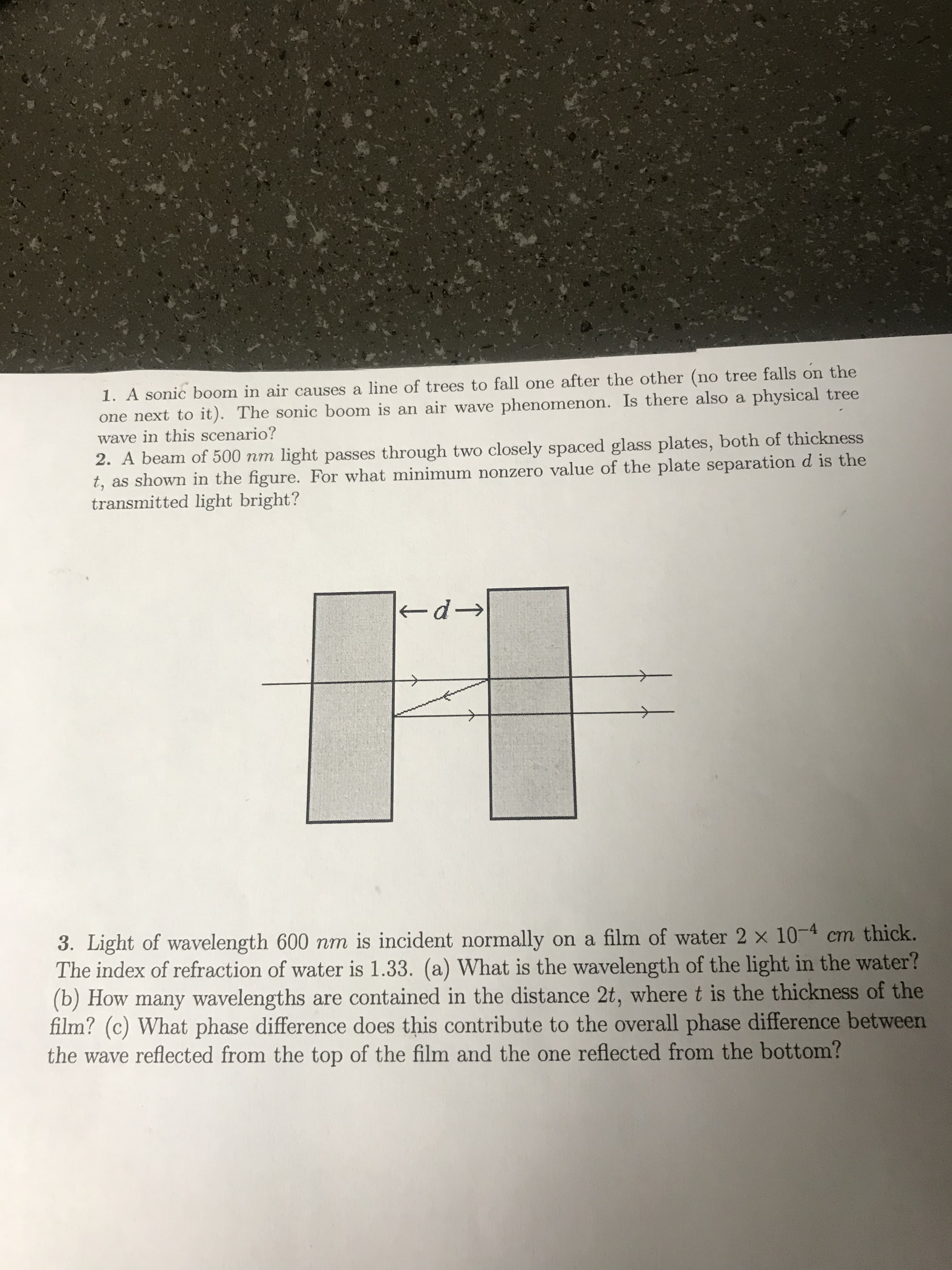1. A sonic boom in air causes a line of trees to fall one after the other (no tree falls on the one next to it). The sonic boom is an air wave phenomenon. Is there also a physical tree wave in this scenario? 2. A beam of 500 nm light passes through two closely spaced glass plates, both of thickness t, as shown in the figure. For what minimum nonzero value of the plate separation d is the transmitted light bright? kd→ 3. Light of wavelength 600 nm is incident normally on a film of water 2 x 10-4 cm thick. The index of refraction of water is 1.33. (a) What is the wavelength of the light in the water? (b) How many wavelengths are contained in the distance 2t, where t is the thickness of the film? (c) What phase difference does this contribute to the overall phase difference between the wave reflected from the top of the film and the one reflected from the bottom?
1. A sonic boom in air causes a line of trees to fall one after the other (no tree falls on the one next to it). The sonic boom is an air wave phenomenon. Is there also a physical tree wave in this scenario? 2. A beam of 500 nm light passes through two closely spaced glass plates, both of thickness t, as shown in the figure. For what minimum nonzero value of the plate separation d is the transmitted light bright? kd→ 3. Light of wavelength 600 nm is incident normally on a film of water 2 x 10-4 cm thick. The index of refraction of water is 1.33. (a) What is the wavelength of the light in the water? (b) How many wavelengths are contained in the distance 2t, where t is the thickness of the film? (c) What phase difference does this contribute to the overall phase difference between the wave reflected from the top of the film and the one reflected from the bottom?
Related questions
Question
I need help with question #3. Please and thank you.

Transcribed Image Text:1. A sonic boom in air causes a line of trees to fall one after the other (no tree falls on the
one next to it). The sonic boom is an air wave phenomenon. Is there also a physical tree
wave in this scenario?
2. A beam of 500 nm light passes through two closely spaced glass plates, both of thickness
t, as shown in the figure. For what minimum nonzero value of the plate separation d is the
transmitted light bright?
kd→
3. Light of wavelength 600 nm is incident normally on a film of water 2 x 10-4 cm thick.
The index of refraction of water is 1.33. (a) What is the wavelength of the light in the water?
(b) How many wavelengths are contained in the distance 2t, where t is the thickness of the
film? (c) What phase difference does this contribute to the overall phase difference between
the wave reflected from the top of the film and the one reflected from the bottom?
Expert Solution
This question has been solved!
Explore an expertly crafted, step-by-step solution for a thorough understanding of key concepts.
This is a popular solution!
Trending now
This is a popular solution!
Step by step
Solved in 3 steps with 3 images
